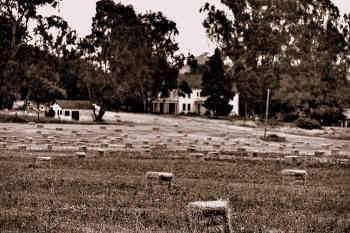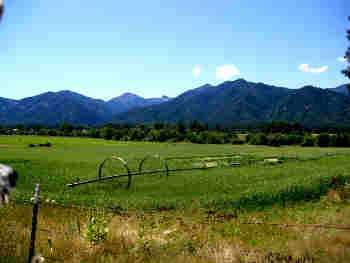By Yoni Cooperman
Alfalfa has a long and storied history in California agriculture. First introduced in the state during the gold rush of 1849-1850, California now leads the nation in alfalfa production. Between 2013-2015, an average of 815,000 acres of alfalfa were harvested in the state. Statewide alfalfa yields increased to 5,451,000 tons in 2015 and California now accounts for over 9% of total U.S. production. Alfalfa serves as an important source of hay while also proving useful as a ‘green manure' that can provide nitrogen for the following crops. That being said, alfalfa has relatively high water demands, a particularly vexing issue due to the current statewide drought. While some 98% of alfalfa cropping systems utilize flood irrigation, the potential for utilizing sub-surface drip irrigation (SDDI) has become an attractive option to many growers seeking to reduce water usage. The type of irrigation utilized can also influence nitrous oxide (N2O) emissions. N2O is a potent greenhouse gas 300 times more powerful than carbon dioxide in warming the planet. Agriculture accounts for more than 60% of statewide N2O emissions from human activity. It has been shown that SSDI reliably reduces N2O emissions in other cropping systems.

Alfalfa has been grown in California for over 150 years (image used under CC BY-NC-ND 2.0 license)
UC Davis Land, Air, and Water Resources graduate student Ryan Byrnes recently completed a year-long study investigating the potential for SSDI to mitigate N2O emissions from alfalfa production. The study compared rates of N2O production in side by side alfalfa systems, one utilizing check flood irrigation while the other had a SSDI system installed. “We found that yearly emissions were significantly reduced by the adoption of SSDI.” Sustained soil moisture drives N2O emissions, and he noted that “SSDI keeps the soil surface dry, potentially reducing N2O emissions.” While large bursts of N2O emissions are often observed following the rewetting of dry soil, Ryan pointed out that “the pulse emissions in the SSDI plots was lower than in the flood plots.” The emissions following the first rains were not high enough in the SSDI plots to offset the reductions observed through the rest of the season. While additional studies are needed to draw any definitive conclusions, the findings of this study are encouraging. Stay tuned to this space for reports on future studies investigating the potential for SSDI to mitigate statewide N2O emissions.

Source:ucanr.edu